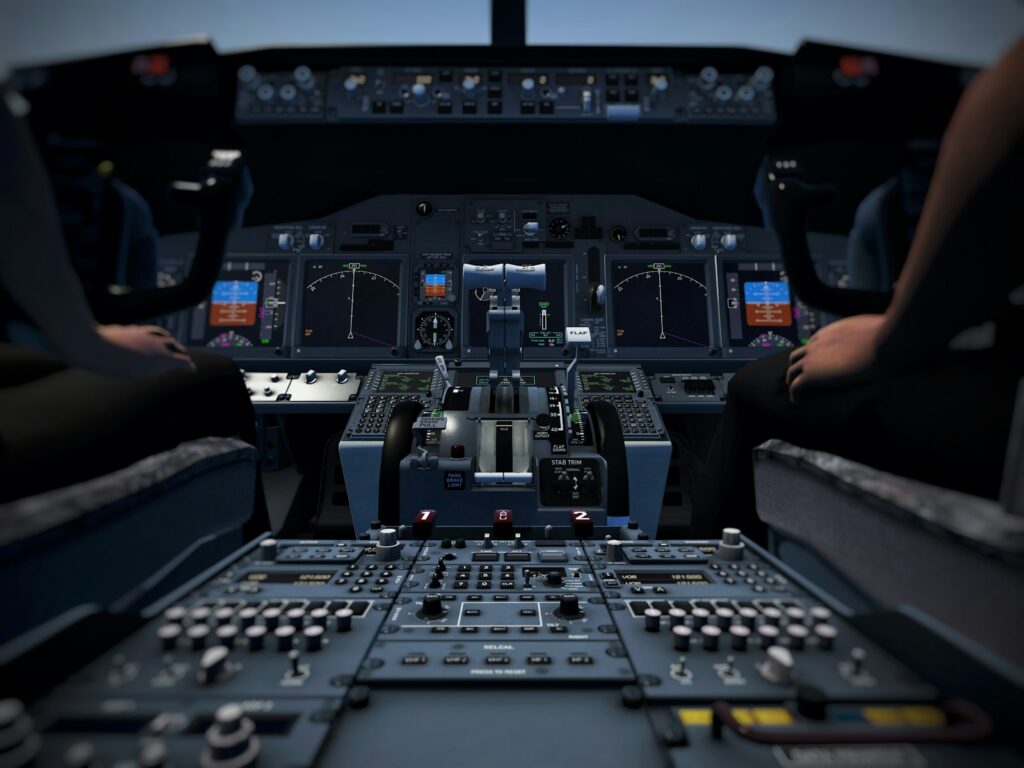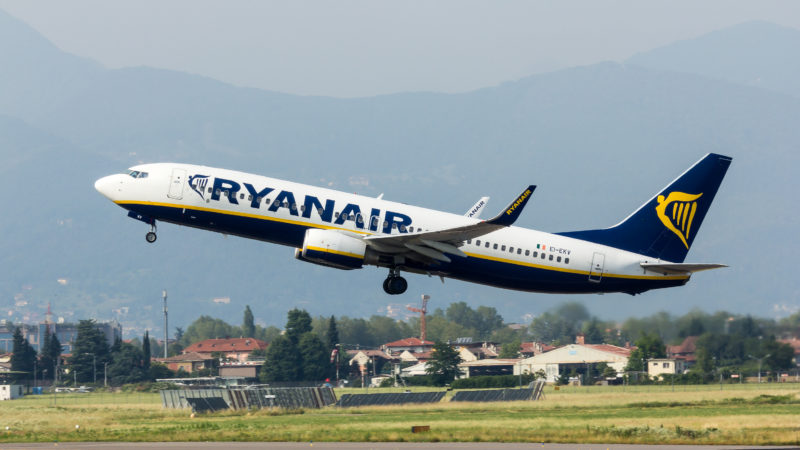
36,000 Feet of Terror: United Flight 613’s Sudden Altitude Plunge
A United Airlines flight bound for Washington, D.C., from Lagos, Nigeria, turned into a harrowing ordeal for passengers and crew high above the African continent. The routine overnight journey was dramatically interrupted by a sudden, rapid descent that sent the aircraft plummeting and caused chaos in the cabin.
According to a preliminary accident report recently revealed by the National Transportation Safety Board (NTSB), the incident occurred on January 24, 2025, approximately 93 minutes after United flight 613 departed Murtala Muhammed International Airport in Lagos. The Boeing 787-8 aircraft, registered as N27903, was flying over Côte d’Ivoire when the sudden altitude upset began.
The flight had taken off from Lagos just before midnight on January 23, climbing to its cruising altitude of 36,000 feet. Everything seemed normal aboard the long-haul flight, settling into the routine of transatlantic travel, as passengers and crew prepared for or were engaged in meal service.
The calm of the high-altitude cruise was shattered at approximately 01:31 Lagos time on January 24. Without warning, the aircraft experienced a sudden descent. This was not a gradual change; reports indicate it was a rapid and alarming drop in altitude that immediately signaled that something was gravely wrong.

The force of the sudden change was intense, causing objects to be violently tossed throughout the cabin. Baggage compartments sprung open, sending personal items flying, while food trays and other loose articles became projectiles. The scene inside the aircraft quickly devolved into one of panic and fear.
Passengers onboard described the terrifying experience with vivid detail. One female passenger, who spoke to Nairametrics and requested anonymity, likened the sensation of the descent to “falling into a vacuum.” The feeling was unlike typical turbulence, she explained, stating it “felt as if something was dragging the plane from beneath.
She recounted the immediate fear that gripped those aboard, noting, “People were screaming, and you could feel the panic.” The rapid loss of altitude was palpable, with the plane “dropping so fast,” according to her account. Even the cabin crew, who are trained to handle emergencies, appeared visibly shaken by the unexpected and severe nature of the event.
Social media platforms soon became home to firsthand accounts and videos shared by those aboard. Footage reportedly obtained from a passenger and shared widely showed the distress inside the cabin, capturing the sounds of screams and the sight of passengers frozen in shock or visibly upset by the unfolding emergency.
Product on Amazon: Packing Cubes for Travel – 8 Set Luggage Organizer Bags for Family, Mesh Breathable Travel Packing Cubes for Suitcases Durable Travel Essentials Bags Set
Brand: Visit the YEEYAA Store
Price: 9.99 USD
Rating: 4.4 Total reviews: 582
Material: Nylon
Color: Beige
Product Dimensions: 11.8″L x 0.7″W x 12.6″H
Special Feature: Waterproof, Lightweight, Durable, Foldable, Handle
Load Capacity: 22.1 Pounds
Recommended Uses For Product: Travel, Organizer, Clothing, Home, Camping
Closure Type: Zipper
Shape: Rectangular
Number of Items: 8
Top Review from US: “for being on the cheaper side they work great. i’ve taken them on several trips and have had no issues, definitely recommend!”
Shopping on Amazon >>
Read more about: Chaos in the Cabin: Unexpected Turns on Recent Flights Due to Passengers and Even a Pilot’s Missing Passport

Technical Failure and Human Rescue: A Full Analysis of Inertial Reference Unit (IRU) Malfunctions
The NTSB preliminary report sheds light on the technical issues that precipitated this alarming event. The investigation found that two Inertial Reference Units (IRUs) failed on the aircraft shortly before the rapid altitude upset. These units are critical components for aircraft navigation and attitude sensing.
The report specifies that the jet’s left IRU failed approximately 1 hour and 5 minutes before the altitude upset occurred. This was followed by the failure of the right IRU about 55 minutes later, meaning the second critical system failed just minutes before the rapid altitude changes began.
Seconds before the sudden altitude upset, the autopilot automatically disconnected. This triggered master caution and master warning alerts in the cockpit, signaling to the pilots the severity of the situation. The flight crew immediately took manual control of the aircraft upon the disconnection of the autopilot and the activation of the alerts.
The sudden altitude changes, triggered by the system failures and the subsequent events in the cockpit and aircraft systems, continued for approximately 12 minutes. During this period, the Boeing 787-8 deviated from its assigned cruising altitude of 36,000 feet, reaching a maximum height of 36,203 feet and dropping to a minimum of 35,577 feet.
From Chaos to Safe Landing: A 12-Minute Emergency Response Record
The NTSB report also notes that during this period of altitude excursions, the aircraft’s stick shaker was activated, a safety feature that alerts pilots to an impending stall. Furthermore, the auto-throttle system disconnected, then re-engaged, before disconnecting a second time, indicating complex interactions between the aircraft’s systems during the emergency.
The immediate aftermath of the rapid descent and the ongoing altitude changes was a scene of injury and distress. The NTSB report states that the altitude excursions occurred during meal service, which likely contributed to the number and severity of injuries as passengers and crew were not secured in their seats.
In total, 16 people aboard the flight sustained injuries. The aircraft carried 243 passengers and 11 crew members. Some of those injured required hospitalization for serious injuries, including four passengers and two crew members, although they were subsequently discharged. An additional 27 passengers and five crew members reported suffering minor injuries.
Despite the terrifying experience and the injuries sustained, the flight crew made the critical decision to return to Lagos. The aircraft safely landed back at Murtala Muhammed International Airport at approximately 3:22 a.m. on January 24, bringing the harrowing journey to an end on solid ground.
Product on Amazon: YUSWKO Rechargeable Milk Frother Handheld with 3 Heads, Silver Coffee Electric Whisk Drink Foam Mixer, Mini Hand Stirrer with 3 Speeds Adjustable for Latte, Cappuccino, Hot Chocolate, Egg
Brand: Visit the YUSWKO Store
Price: 25.99 USD
Rating: 4.3 Total reviews: 9892
Color: Silver
Material: Stainless Steel, Acrylonitrile Butadiene Styrene (ABS)
Product Dimensions: 1.2″W x 6.7″H
Top Review from US: “I’ve tried my fair share of handheld frothers in the past, so I was a bit skeptical about this one, especially considering the price. But after catching a deal, I decided to take the plunge—and I’m so glad I did! I use this frother WAY more than any I’ve had before, and it’s become an essential part of my kitchen routine.Pros:3 Speed Settings: This feature really stands out!”
Shopping on Amazon >>

Aviation Safety Warning: System Vulnerabilities and Improvements Seen Through Black Box Data
United Airlines initially described the event only as a “technical issue” that necessitated the aircraft’s return to Lagos. The airline clarified at the time that turbulence was not the cause of the sudden descent and stated they were cooperating with aviation authorities in both the United States and Nigeria to determine the actual cause of the incident.
It was only with the public release of the NTSB’s preliminary accident report that the specific nature of the “technical issue” became clear: the failure of the Inertial Reference Units. This finding provides crucial insight into the sequence of events that led to the terrifying mid-air emergency.
The investigation into the incident is ongoing. Due to the location of the incident, which occurred while the aircraft was flying over Côte d’Ivoire, the authorities in Côte d’Ivoire hold primary investigative responsibility. However, they have granted a request from the NTSB to assist with the investigation, pooling resources and expertise to understand fully what transpired.
Read more about: Chaos in the Cabin: Unexpected Turns on Recent Flights Due to Passengers and Even a Pilot’s Missing Passport

As part of the investigation, the aircraft’s flight data recorders, along with the failed inertial reference units and attitude heading reference units, were removed from the Boeing 787-8 in Lagos. These critical components were then shipped to Washington, D.C., for detailed examination and analysis by investigators.
A significant challenge noted in the NTSB report is the lack of cockpit audio recordings capturing the event. The jet’s cockpit voice recorder (CVR) only captures the last two hours of audio. By the time investigators were able to access the recorder in Lagos, the crucial audio documenting the moments leading up to and during the rapid descent and altitude excursions had been overwritten.
The overwritten CVR data means investigators will rely heavily on the flight data recorder and the analysis of the failed IRUs and other units to reconstruct the precise sequence of events and pilot actions during the emergency. This underscores the importance of quick access to aircraft recorders after an incident.
The psychological impact of such an event on those onboard is substantial, even if physical injuries are minor. Travelers place immense trust in the safety systems and reliability of commercial aviation. Moments like this incident, where a routine flight suddenly turns into a frightening emergency, can understandably shake that fundamental assumption, however briefly.

The safe return and landing in Lagos, despite the significant technical failures and the stressful situation aboard, is a testament to the training and actions of the flight crew in managing a complex emergency under duress. Their ability to regain manual control and bring the aircraft back safely prevented a potentially far worse outcome.
This incident, though resolved with the aircraft safely on the ground, serves as a stark reminder of the inherent complexities and potential vulnerabilities within modern air travel systems. It highlights how reliant flight safety is on the intricate interplay of advanced technology and skilled human intervention.
The ongoing investigation will aim to uncover the full details of the IRU failures, how they interacted with other aircraft systems, and whether there are broader implications for the Boeing 787 fleet or airline procedures. The aviation industry watches closely as the NTSB and Côte d’Ivoire authorities work to piece together the full picture.
For the passengers and crew of United Flight 613, the experience high over Côte d’Ivoire will undoubtedly be a lasting memory. The sudden drop, the chaos in the cabin, and the anxiety of not knowing the cause were real and immediate. Their journey to Washington, D.C., took an unexpected and terrifying turn, leading them back to their point of origin.
Product on Amazon: Airplane Flying Handbook: FAA-H-8083-3C (2025)
Price: 15.93 USD
Rating: 4.6 Total reviews: 170
Top Review from US: “Good condition. Product arrived as expected.”
Shopping on Amazon >>

The return to Lagos marked the end of the emergency phase but the beginning of the aftermath. Injured individuals required medical attention, passengers needed assistance with rebooking and accommodations, and the process of coming to terms with the frightening experience began for everyone who was onboard the aircraft that day.
The incident underscores a crucial truth often discussed in aviation safety circles: even with highly advanced aircraft and rigorous maintenance schedules, unexpected events can occur. The focus now is on understanding exactly why the IRUs failed and how similar occurrences can be prevented in the future.
The preliminary NTSB report is just the first step in a potentially lengthy investigation. A final report will likely take many months to compile, incorporating detailed analysis of the recovered units, flight data, and interviews with the crew and other relevant parties. This thorough process is essential for enhancing aviation safety globally.
In the wake of such events, airlines and regulators often review procedures and training protocols. The lessons learned from United Flight 613’s rapid descent will contribute to the collective knowledge base of the aviation industry, helping to reinforce the layers of safety that underpin air travel.
Product on Amazon: Comprehensive First Aid Kit, Premium Emergency Trauma Kits with Shoulder Strap for Car Camping Gear, Labelled Compartments Survival Kit, Home Essentials, Outdoor Emergency Medical Supplies -324 Piece
Brand: Visit the Besst Survivor Store
Price: 84.34 USD
Rating: 4.8 Total reviews: 618
Special Feature: With Shoulder Strap, Mountable, With Handles
Number of Pieces: 324
Recommended Uses For Product: Backpacking, Camping, Car, Home,Sports, Outdoor Emergency
Color: Red
Top Review from US: “This medical kit has proven indispensable for both travel and professional use. Its comprehensive contents address a wide range of potential needs. The compact design allows for easy storage in various settings, including a vehicle. Durability and high-quality materials ensure long-lasting performance. I highly recommend this kit for anyone seeking reliable medical supplies on the go.
Shopping on Amazon >>

The experience serves as a powerful, albeit unwanted, reminder that despite the incredible reliability of modern flight, vigilance and the ability to respond effectively to unexpected emergencies remain paramount for flight crews. The safe landing in Lagos is a testament to the crew’s professionalism under extreme pressure, navigating a sudden technical crisis thousands of feet in the air.
The sequence of events – from routine cruise to dual system failures, autopilot disconnection, manual takeover, rapid descent, chaos in the cabin, and finally, a safe return – paints a picture of a crew battling significant challenges. Their actions ensured that despite the injuries and terror, all 254 people aboard ultimately returned safely to the ground.
The focus of the investigation will be on the technical sequence: how the IRU failures occurred, why they led to the sudden altitude changes, and how the aircraft’s other systems responded. This technical understanding is key to preventing recurrence and maintaining the high safety standards expected in air travel today.
Product on Amazon: SimCoach Aviation Navigation Plotter, Premier Fixed Plotter with WAC Charts, Flight Planning Routes Tools for Pilots, Accurate Scale Flight Plotter for Aviation Students
Brand: Visit the SimCoach Store
Price: 9.99 USD
Rating: 4.6 Total reviews: 47
Features:
1. This aviation plotter is a double-sided printed design, easy to read the scale on each side. The sectional scale 1:500000, wac scale 1:1000000 and terminal area scale 1:250000.
2. This flight plotter is fine in workmanship, using special manufacturing technology to make the printed numbers and other marks on the ruler will not fade for a long time.
3. The navigation plotter is calibrated according to the legal ratio of miles and nautical miles, ensuring that the scale is accurate and precise. This aviation ruler allows pilots to accurately determine their flight distance and direction.
4. This fixed plotting ruler is ideal for aviation student training, private pilot training, search and rescue operations, and crew member training. Suitable for flight instructors use as a teaching tool to teach students how to plot routes and measure distances.
5. The slide rule is made of plastic material, not easy to break and melt. It can withstand high temperature.
Top Review from US: “I’ve been looking for this ruler for decades and was so happy and shocked to find it. It is definitely thinner than what I used while on active duty in the Navy, yet it will work just fine.”
Shopping on Amazon >>

The story of United Flight 613 highlights the dynamic nature of flight, where complex systems operate seamlessly for the vast majority of time, but require expert human intervention when anomalies arise. The safe outcome, despite the terrifying moments experienced over Côte d’Ivoire, is the ultimate priority and focus in the aftermath of any such event.
The NTSB’s ongoing work, assisted by Côte d’Ivoire authorities, is critical to providing clarity on the incident. Their findings will inform future safety recommendations and reinforce confidence in air travel, ensuring that lessons from this alarming descent contribute to making the skies safer for everyone.
Ultimately, the 16 people injured and the hundreds of others aboard Flight 613 experienced a flight they will never forget. The sound of screaming, the feeling of dropping, and the sight of items flying through the air are powerful reminders of how quickly order can turn to chaos at 36,000 feet, even if only for a terrifying few minutes.
Related posts:
Lufthansa A380 Flight LH414 Forced to Divert to Boston After Rapid Descent, Creates Transatlantic Travel Chaos, Unpacking the Turmoil: A Deep Dive
Delta plane descended too quickly, experts say after TSB report offers latest findings on Pearson crash
16 Injured After IRUs Failed on United Airlines Boeing 787 Aircraft: NTSB





